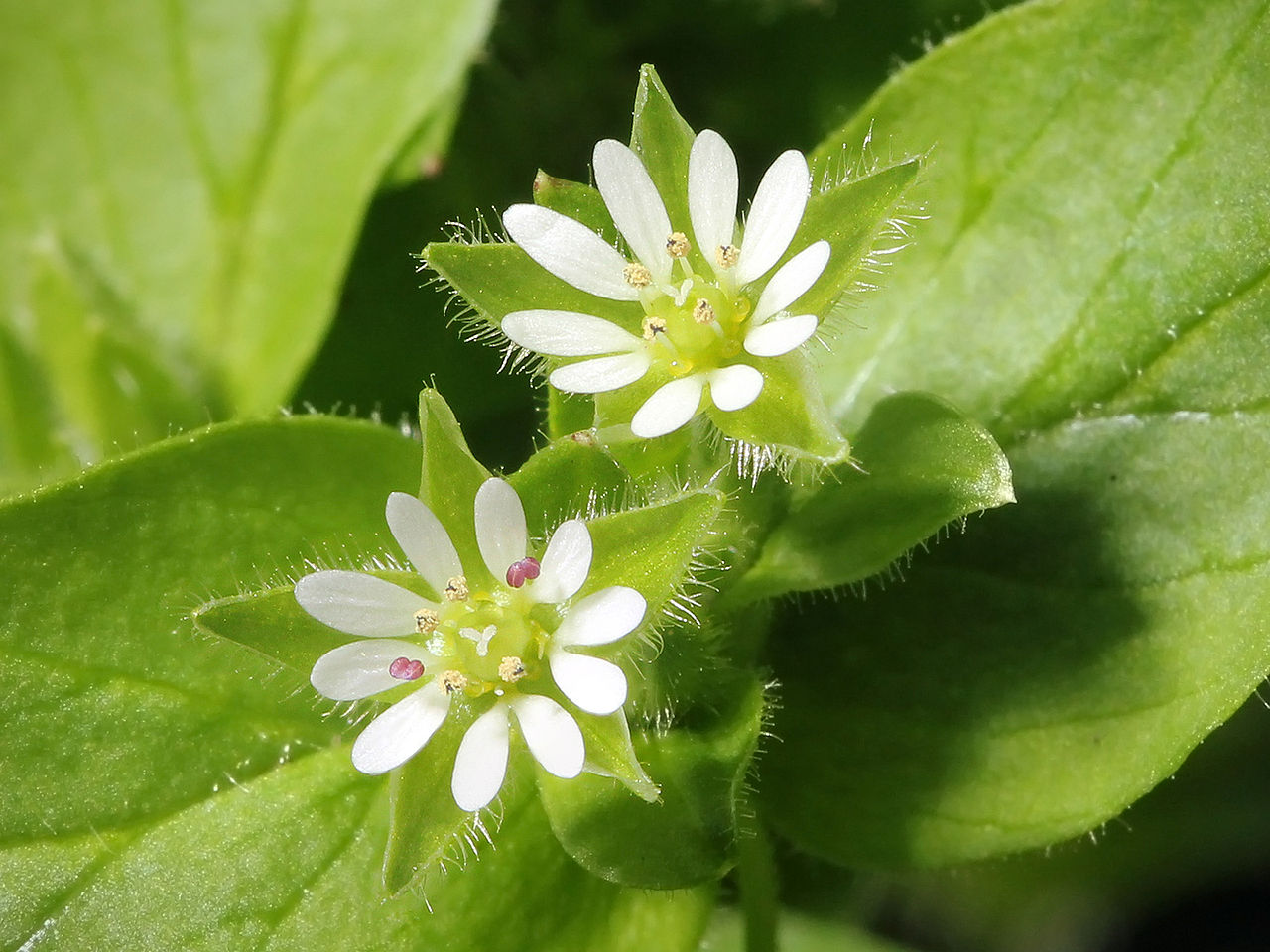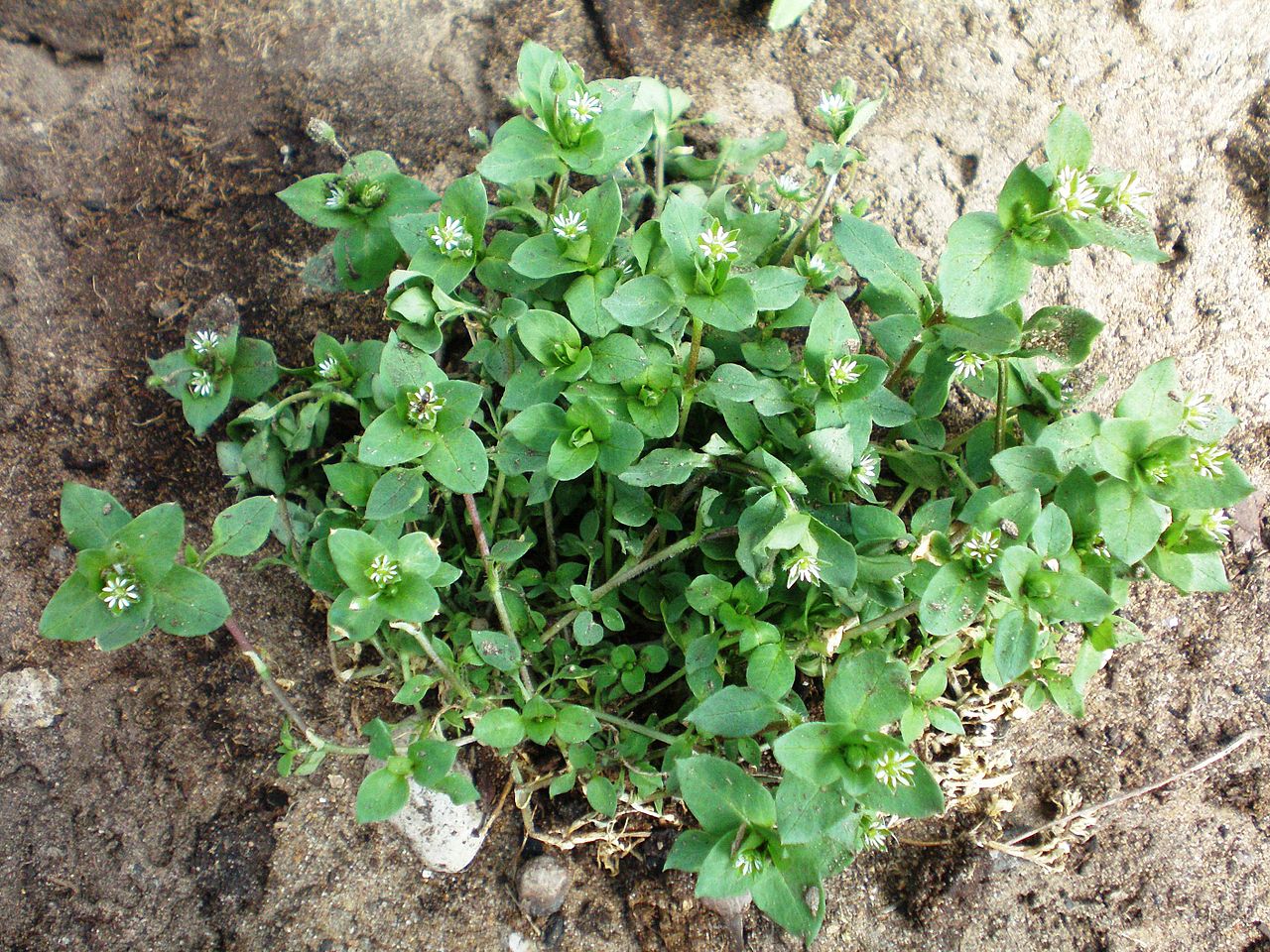Apply Preen in Fall to Reduce Spring Weeds
A fall application of Preen can stop sneaky winter weeds like henbit, purple dead nettle, chickweed, and speedwell from taking over the ornamental spring garden.

Chickweed (Stellaria media) flowers
Common chickweed is a European annual weed that’s naturalized throughout most of the United States and southern Canada, except for the far West. It makes fast-spreading mats in lawns. It only grows an inch or two tall, so it escapes the mower blades even when they are set low.
Chickweed has small, elliptical leaves less than the size of a pinky fingernail. During the growing season, it displays dainty, white, five-petal flowers. These produce tiny seeds that winter over and germinate in cool, damp weather the following season.
Don’t confuse common chickweed with closely related, perennial mouse-ear chickweed, also a common lawn weed. Similar, mouse-ear chickweed is distinguished by its leaves covered with tiny hairs. Mouse-ear chickweed also roots along its stems as it creeps.

Pull existing plants by hand, being careful to get the roots as well as the brittle stems. Ideally remove them before the plants have had a chance to flower and seed. Do NOT compost seeding plants.
Both common chickweed and mouse-ear chickweed are readily killed in lawns by applications of granular broadleaf weed killers, such as Preen Lawn Weed Control. Spring and fall applications are effective, but Preen Lawn Weed Control can be used anytime chickweed is actively growing. Always read and follow the label directions.